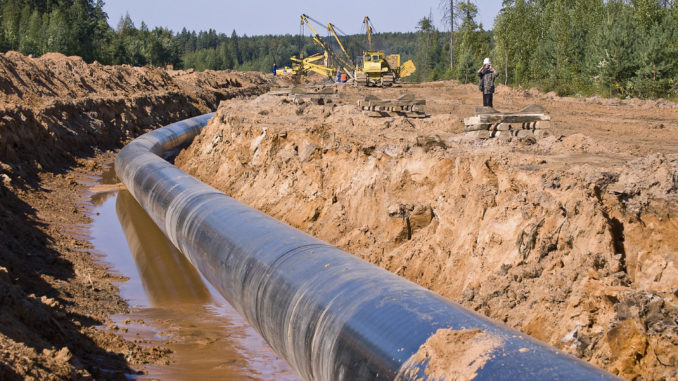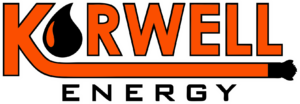
The Carbon Mapper and Environmental Defense Fund released insights generated from three years of airborne surveys (conducted between 2019 and 2021) using advanced remote sensing technology to pinpoint, quantify, and track methane emissions from oil and gas production facilities in the Permian Basin across Texas and New Mexico.
The data reveals that about 30 facilities—including pipelines, well pads, compressor stations and processing facilities—persistently emitted large volumes of methane over multiple years, and that repairing those leaks could immediately reduce 100,000 metric tons of methane per year. These 30 facilities make up less than .001% of the region’s oil and gas infrastructure, and yet they produce the same near-term climate pollution as about half a million passenger vehicles. The mitigation of these 30 super-emitters would prevent $26 million a year in wasted gas.
Cutting methane—a super-potent greenhouse gas with vastly greater near-term warming potential than CO2—has become a heightened priority domestically and internationally given the urgency of the climate crisis. Recently, the U.S. and more than 100 other countries signed the Global Methane Pledge to cut methane 30% by 2030.
“In this decisive decade for reducing greenhouse gas emissions every molecule matters, and the fact that some facilities are persistently leaking methane for years without detection or repair highlights the urgent need for comprehensive and transparent methane monitoring,” said Riley Duren, Chief Executive Officer for Carbon Mapper and Research Scientist at the University of Arizona. “The magnitude of emissions coming from a handful of methane sources in one of the top oil- and gas-producing regions illustrates the opportunity to make significant near-term progress toward the stated methane reduction goals of the U.S., other countries, and companies around the world.”
Pipeline Problems
The high-resolution data also reveals important insights about the types of equipment releasing methane, to within a few meters of its location. Gathering pipelines appear to be a significant source of leakage in the Permian, responsible for nearly 20% of the observed persistent super-emitters. But of the 435,000 miles of U.S. onshore gathering pipelines, only 11,569 miles (less than 3%) are currently subject to federal leak survey standards set by the Pipeline and Hazardous Materials Safety Administration (PHMSA).
The PIPES Act of 2020 expanded PHMSA’s responsibility to protect the environment and specifically called for enhanced oversight of gathering lines. PHMSA issued a new rule to expand leak survey requirements to an additional 20,336 miles of gathering lines, set to take effect in May 2022 – but industry groups oppose that requirement and are seeking reconsideration of the rule.
“PHMSA must continue to improve oversight of gathering lines and require the use of advance methane monitoring to find and fix pipeline leaks,” said Erin Murphy, EDF Senior Attorney for Energy Markets and Utility Regulation. “In fact, reports show there are more commercially available solutions for controlling pipeline emissions today than ever before.”
Next Steps
Cumulatively, the Carbon Mapper research team detected nearly 1,100 super emitters across the Permian Basin over the course of their research which was performed as part of a joint NASA, RMI, and University of Arizona research program and EDF’s PermianMAP initiative. These facilities ultimately contribute to about half of the basin’s total methane emissions. While leaks at these facilities are very large, most are shorter in duration and underscore the need for frequent monitoring of all facilities basin-wide to pinpoint and mitigate as many super emitting sites as possible.
Rules being advanced by the Environmental Protection Agency and New Mexico Environment Department (NMED) have the potential to address oil and gas pollution by requiring regular monitoring at most processing facilities and production sites—including at smaller, leak-prone wells. The NMED rules will be finalized in March and the EPA is accepting comment on its current rule proposal through Jan. 31. EPA is also expected to issue a supplemental proposal this spring that will further address pollution from smaller wells and routine flaring.
Comprehensive EPA rules represent the Biden administration’s biggest and most immediate opportunity to achieve significant pollution reductions across the Permian region as well as its commitments under the global methane pledge.
“It takes a combination of ground-based inspections and frequent advanced screening, such as aerial monitoring, to effectively find and fix these recurring sources of methane emissions,” said David Lyon, senior scientist at Environmental Defense Fund. “We know methane can be emitted across a wide range of infrastructure and can be cost-effectively reduced with a combination of strong regulations and available technologies.”
Everyday your story is being told by someone. Who is telling your story? Who are you telling your story to?
#thecrudelife promotes a culture of inclusion and respect through interviews, content creation, live events and partnerships that educate, enrich, and empower people to create a positive social environment for all, regardless of age, race, religion, sexual orientation, or physical or intellectual ability.
If anyone would like to schedule an interview, meeting or news tip email studio@thecrudelife.com
Industrial Integrity and Energy Ethics are the new entry level expectations in oil and gas, and The Crude Life continues to create original Local, Boots-On-The-Ground Journalism while showcasing other environmentally conscious companies.
Communication is vital in today’s energy extraction and empowerment.
About The Crude Life
The Crude Life produces original content that focuses on industry, the people, energy innovations, community building and it’s proactive culture. Our custom content is non-polarizing, trusted and often news making.
The Crude Life promotes a culture of inclusion and respect through interviews, content creation, live events and partnerships that educate, enrich, and empower people to create a positive social environment for all, regardless of age, race, religion, sexual orientation, or physical or intellectual ability.
Part of our mission is to enable people, companies and communities to affect change, demonstrate their transformative actions and drive energy awareness through storytelling and access to resources.
Sponsors, Music and Other Show Notes

Studio Sponsor: The Industrial Forest
The Industrial Forest is a network of environmentally minded and socially conscious businesses that are using industrial innovations to build a network of sustainable forests across the United States.
Weekly Sponsor: Korwell Energy
Korwell Energy is an industry leading designer, ASME code manufacturer, and remanufacturer of production equipment for oil and gas producers, throughout the Rocky Mountain Region.
They retain both an ASME U and R stamp. Their 28,000 sq ft of manufacturing shop with overhead cranes create a safe and productive environment for their team who collectively have over 75+ years of experience in manufacturing of ASME Oil and Gas production equipment.
Korwell prides themselves on outstanding customer service, expertise, and cutting-edge technology to partner with customers to maximize their individual production goals and help comply with ever changing regulations.

Weekly Sponsor: Great American Mining Co
Great American Mining monetizes wasted, stranded and undervalued gas throughout the oil and gas industry by using it as a power generation source for bitcoin mining. We bring the market and our expertise to the molecule. Our solutions make producers more efficient and profitable while helping to reduce flaring and venting throughout the oil and gas value chain.

Phone Line Sponsor: Swan Energy, Inc. 866.539.0860

Studio Email and Inbox Sponsor: To Be Announced

Featured Music: Alma Cook
For guest, band or show topic requests, email studio@thecrudelife.com
Spread the word. Support the industry. Share the energy.



